

Marvel Comics Presents ran for 175 issues from 1988 until 1995. Each issue included four eight-page stories with typically two or three on-going features (and no ads). It spotlighted some of the leading creators of mainstream comics over a period of precipitous economic growth and even more rapid decline. Reading through it is an opportunity to revisit any number of weird aspects of 90s superhero comics. This blog is a primitive, oddly regimented, manifestly scattershot crawl through an often disappointing but occasionally splendid comic. All image copyrights are Marvel's. Issue credits linked below. Updated on Wednesdays.
Marvel Comics Presents #32: Late November 1989(4.29.20)
Credits: grandcomicsdatabase

Todd McFarlane handles an X-driven Shadowcat cover that echoes Larsen's energy from the Excalibur feature. There's bonkers anatomy and Kitty has a lazy eye, but it's strong piece. At the same time, it's overmatched by a stunning Black Panther in profile on the rear. There's some peculiar design elements here which awkwardly frame the three drawings, but the ascending McFarlane energy is undeniable. In particular, the tension and dimensionality generated by just a few strokes and angular profile.
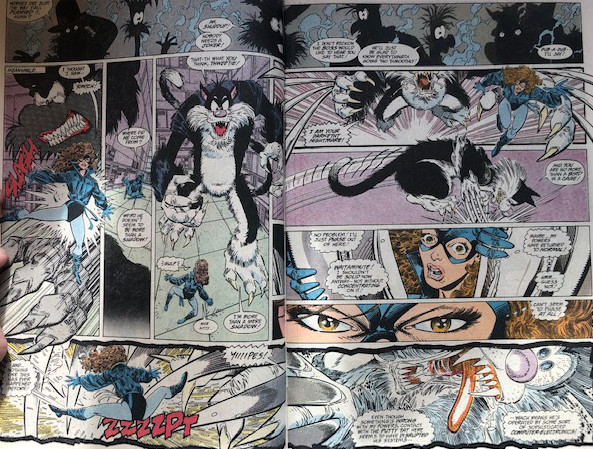
A. Excalibur, "Having a Wild Weekend" [2/8]
Shadowcat squares off against a Sylvester the Cat stand-in, while the ersatz Looney Tunes hold the rest of Excalibur hostage. Larsen marches through a solid scrap here, but the two-page panel layouts prove somewhat distracting on account of some hitches in the printing process. In some ways, this marks the first and most self-consciously MCP feature, since the absence of ads opens up the chance to ignore arbitrarily inserted flips and Larsen is credibly poking around with novel possibilities here--e.g., full-width silhouette tier. It's easy on the eyes and a worthwhile distraction while we await the big bad reveal of presumably Mojo or Arcade.
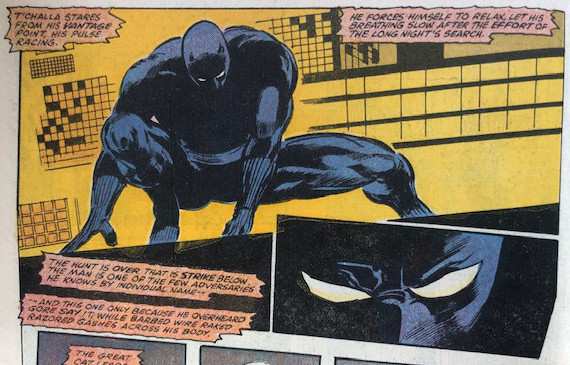
B. Black Panther, "Panther's Quest" [20/25]
Colan is firmly in Black Panther qua Batman territory here as T'Challa stalks Gore in Johannesburg with panel after panel of motion lines weaving in and across the frame. Rockwitz pushes a cascading series of warm, gold tones throughout, which stands in pointed contrast to one of the more gruesome moments in a consistently gruesome feature: Gore's hand is wrenched apart in an escalator.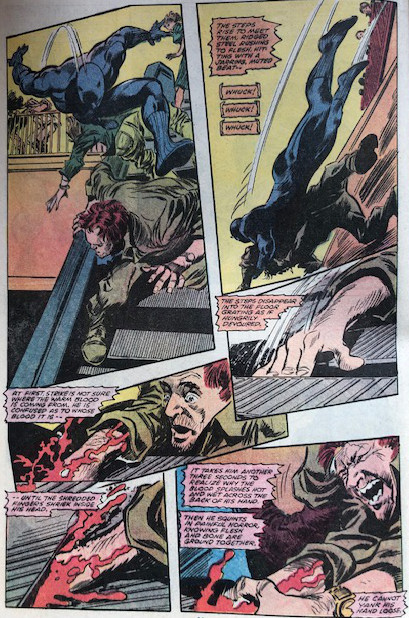
Rosen returns to lettering duties with a new touch--paper folds on the exterior of some of the tattered box captions.
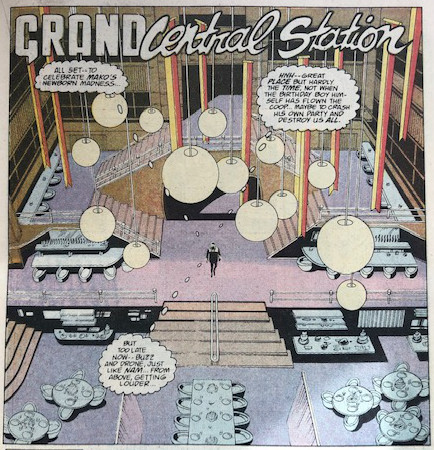
C. Coldblood, "Rise and Shine" [7/10]
The Gulacy draughtmanship can't be over praised and, somewhat amusingly, it leads to a lettering disaster as Tim Harkins does a bizarre backflip to avoid obscuring the scene-setting. Narratively, things seem to continue unspooling as this installment detours through Mako entertaining and subsequently exploding party guests. Some of the vices that hindered Slash Maraud--the lumpy, indistinct storytelling--start to seem even graver when paired with Gulacy's photo-reference driven style.
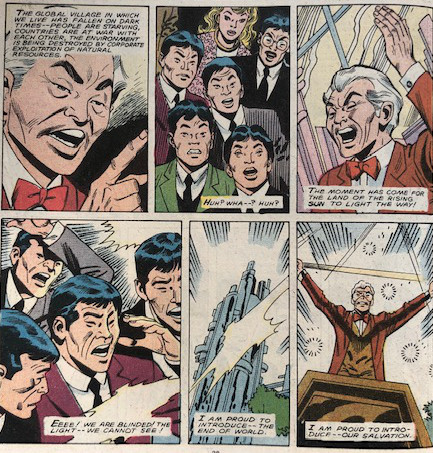
D. Sunfire, "The Dreaded Deadline Doom"
Lobdell returns after the shrieking idiocy of issue #27. Mercifully, this outing is a tepid, one-note dust up with Sunfire battling a mad inventor. Don Heck handles pencils here and, aside from some ham-fisted renderings of Asian characters, directs some rather dynamic action. For all that, the only noteworthy thing here is the formal exercise of placing all narration and speech into open box captions on the bottom of the panels.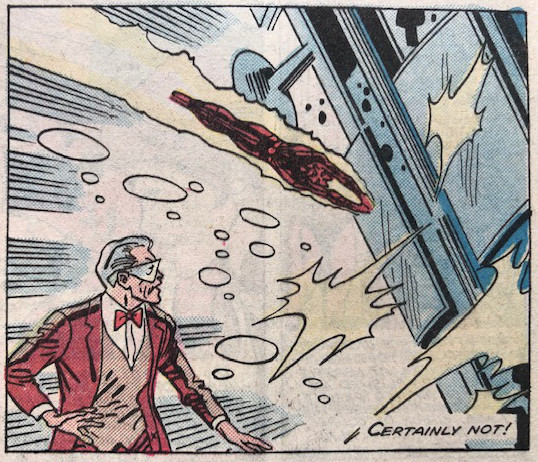
I assume (or hope) this is a riff on some early manga translations rather than a tacky sub-titles joke. With Lobdell, one can't be sure, though.
Power Ranking: Black Panther (B), Excalibur (B), Coldblood (B-), Sunfire (C)